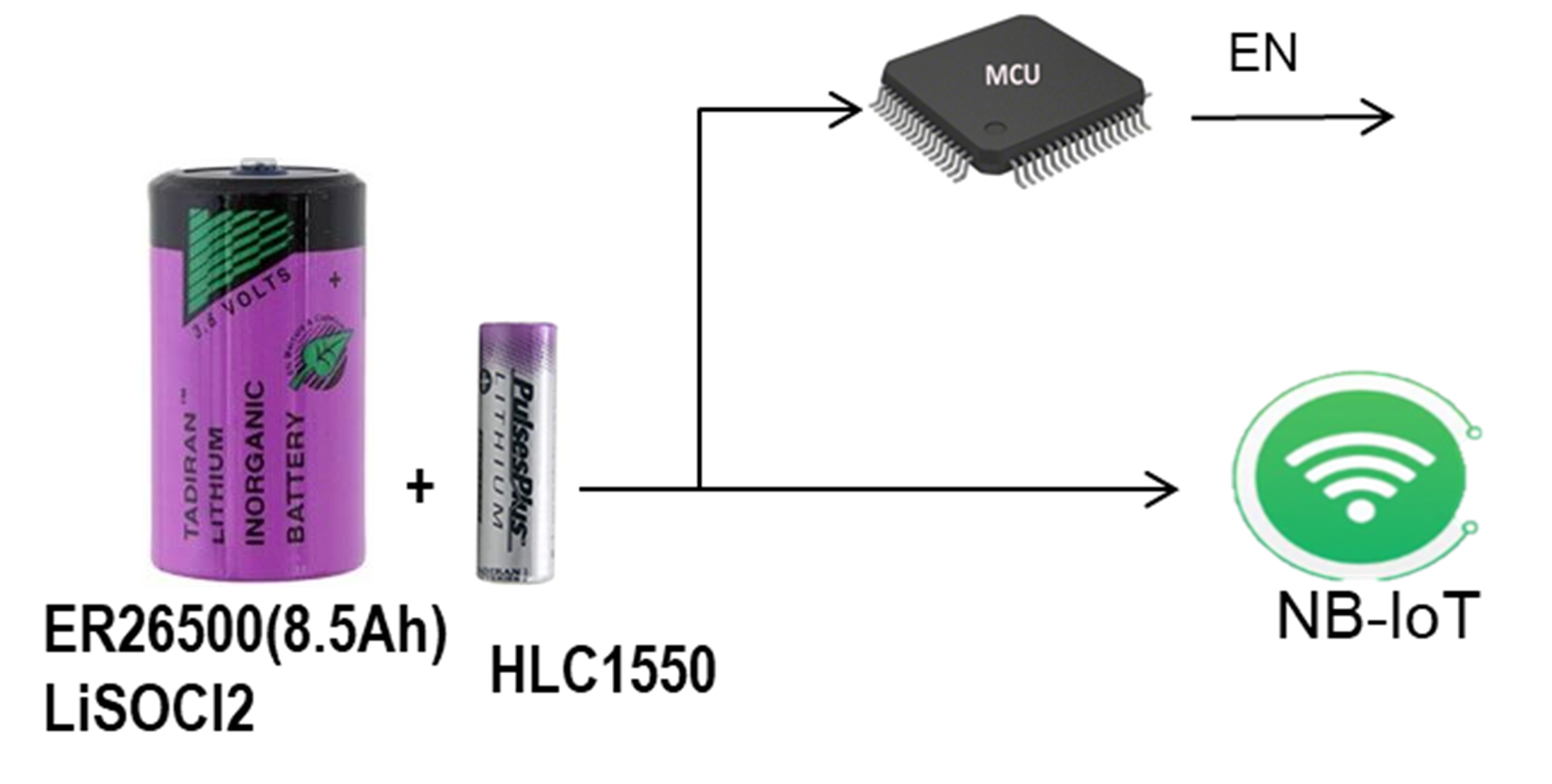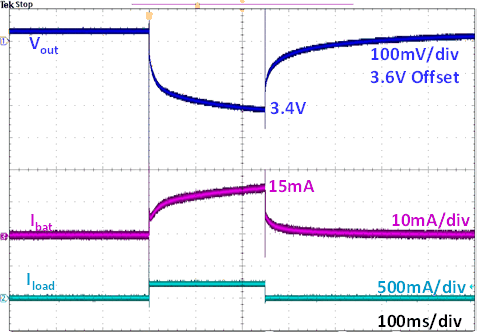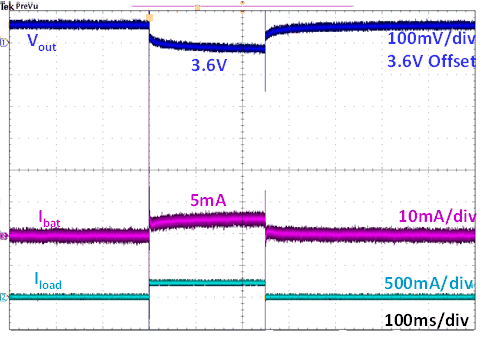SLVAF41A March 2021 – November 2021 TPS61094
2.1 Connecting the Battery Directly
The traditional solution is the direct battery connection solution, like Figure 2-1. The communication model such as NB-IoT is connected with the LiSOCl2 and HLC package directly. The voltage of the LiSOCl2 and HLC package is about 3.6 V at room temperature. When the smart meter does the transmission, the HLC supports the high pulse current for the NB-IoT. During sleep mode, the LiSOCl2 charges the HLC and supports the whole system consumption.
 Figure 2-1 Direct Battery Connection
Solution
Figure 2-1 Direct Battery Connection
SolutionThe disadvantage of the direct battery connection solution is customers must choose HLC1550 instead of HLC1520. Because the LiSOCl2 and HLC package has the poor performance at cold temperature (-25 degC or -40 degC) , like in Figure 2-2 and Figure 2-3. Figure 2-2 is the performance of ER26500 and HLC1520 at high pulse current (250 mA / 250 ms). In the waveform, the voltage of the battery package is down to 3.4 V at high pulse current. It is too little margin to power the whole system. Figure 2-3 is the performance of ER26500 and HLC1550, because HLC1550 has a bigger size and higher current capability, the voltage is down to 3.6 V, and it can support the whole system and do the transmission. But HLC1550 has bigger size and higher cost.
Another disadvantage of this solution is the discharge current of LiSOCl2 is uncontrolled. In the Figure 2-2 and Figure 2-3, the discharge current of LiSOCl2 is up to 15 mA and 5 mA, respectively. The LiSOCl2 cannot achieve the maximum capacity, referring Figure 1-2.
 Figure 2-2 The Performance of ER26500 and
HLC1520 at -25 degC
Figure 2-2 The Performance of ER26500 and
HLC1520 at -25 degC Figure 2-3 The Performance of ER26500 and
HLC1550 at -25 degC
Figure 2-3 The Performance of ER26500 and
HLC1550 at -25 degC